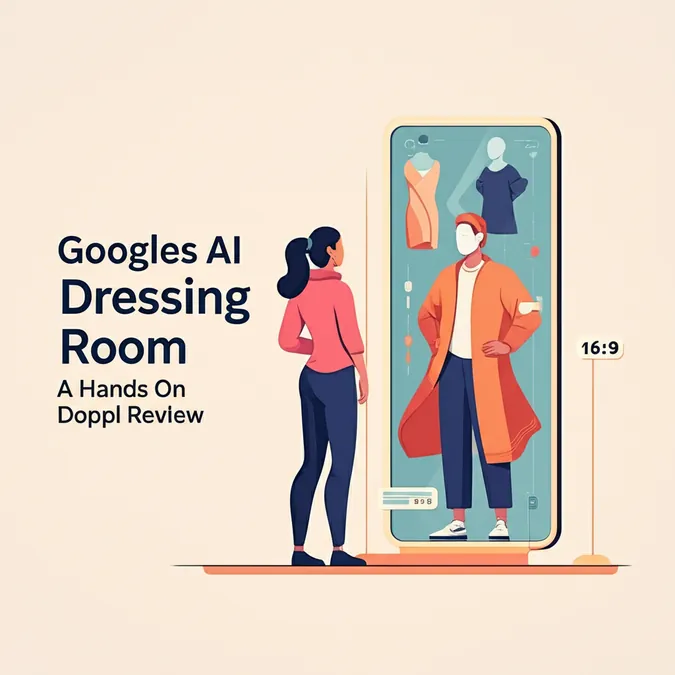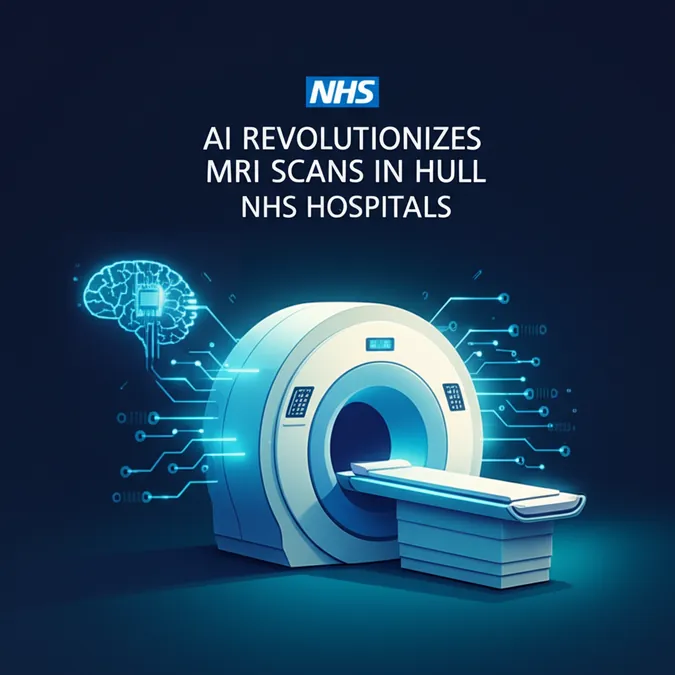Developer Offer
Try ImaginePro API with 50 Free Credits
Build and ship AI-powered visuals with Midjourney, Flux, and more — free credits refresh every month.
Six AI Disruptions Transforming Modern Artistic Practice
From authorship to cognition, artist Loni Stark shares her reflections on six fundamental shifts AI brings to the art studio and how creatives are navigating this new, AI-infused field.
The Perspective Shift
When AI entered my studio, everything changed. It wasn't just about how I create, but why. What does authorship mean when beauty can be generated without understanding? My first instinct was to look backward, following the long arc from raw pigment to the digital pixel. Artists have adapted before, and I sought lessons there to accelerate my own evolution in an AI-influenced world. In a previous piece, I traced this lineage from Renaissance workshops to Romantic attics, discovering how each era’s studio reflected not only the tools of the time but the artist's evolving sense of self. This exploration led me to define what I call the Symbiotic Studio: a creative space where human intuition and machine cognition interact, co-create, and challenge one another. The six disruptions I outline here are born from this new symbiotic relationship.
While my previous exercise was one of a historian tracing continuity, this piece is an act of forecasting—not weather or markets, but meaning. What if AI isn’t a continuation, but a rupture? What if it’s not just a new brush, but a force that redraws the entire canvas? I'm asking: in what ways does AI fundamentally disrupt the artistic lineage?
Six Cracks in the Lineage
Each disruption detailed below reveals more than just a break with the past; it suggests profound implications for me, and possibly for you, as artists. It challenges everything we've assumed about mastery, authorship, and even cognition itself.
1. From Tool to Generative Autonomy
Lineage: Tools have always extended an artist's intent. Mastery was synonymous with control.
Break: AI generates without direct human input. It acts—sometimes with us, but often without us.
This shift mirrors the arrival of high-frequency trading in financial markets. What began as tools to accelerate human judgment evolved into autonomous systems operating at speeds and scales humans couldn't match or fully explain. The 2010 Flash Crash was a stark reminder of this, with analysts struggling to understand what the algorithms had done long after the event.
That same autonomy is now in the studio. No prior tool possessed this level of agency. Poussin’s wax models and a painter’s “happy accidents” always answered to the artist's hand.
Artist’s Reflection: If the system creates without you, are you still the author—or have you become something else entirely?
For me, working with AI has meant strengthening my own intent and meaning, which only I can originate. I use generative AI to create a vast number of variations that would be impossible with manual sketching. From this pool, I curate elements, combine ideas, and find new jumping-off points.
Community Question: Can we value orchestration and system design as creative acts, not just the making of artifacts?
One Artist’s Path: Refik Anadol’s Dataland evolves on its own terms. Anadol designs the parameters and feeds the system massive datasets—from ocean waves to urban patterns—allowing the AI to generate unexpected visual relationships. He doesn’t paint the final image; he architects the conditions for its emergence. He embraces the machine’s autonomy, shifting authorship toward systems thinking. His work suggests that authorship can lie not in the brushstroke, but in designing the environment where generative aesthetics can emerge.
Further Reading:
- WIPO Magazine – Interview on his process and parameters
- Blooloop – Detailed coverage of Dataland
- The Art Newspaper – Process explanation
- NVIDIA AI Art Gallery – Technical details
- Dataland.art – Official site
- Hypebeast – Museum announcement
2. The Flood of Volume
Lineage: Photography and printing expanded access, but human systems of curation and gatekeeping kept pace.
Break: AI overwhelms the current curatorial guardrails. Quality drowns in quantity, and discovery becomes a game of navigating systems.
We see this erosion of trust elsewhere. On Amazon, fake reviews and AI-generated listings are rampant. On Instagram, visibility hinges more on volume and algorithmic virality than on originality. There is no longer a gate, just a flood where clicks and machines serve as the primary arbiters of taste.
Artist’s Reflection: How do you remain distinct when visibility is automated and favors popularity?
As the digital world gets noisier, I've found that cultivating real-life community is more essential than ever. I’ve shifted my focus from chasing ephemeral likes to building deeper connections through studio visits, artist talks, and collaborative projects. These interactions inform my work in ways algorithmic reach never could.
Community Question: Can we build systems that balance immense scale with genuine discernment?
One Artist’s Path: Anna Ridler reclaims curatorial control by asserting it at the source. She photographed 10,000 tulips individually and categorized them by hand, “revealing the human aspect that sits behind machine learning.” Her process was “driven by the rhythms of nature” not digital convenience, spending three months making careful decisions: “Is it white or pale pink? Is it orange or yellow?” This labor-intensive approach ensures the AI-generated tulips carry her specific intentionality. By designing her own training data, Ridler proves that “there is always a human decision somewhere along the chain,” showing artists how to maintain authorship by controlling the inputs, not just the outputs.
3. Radical Unpredictability
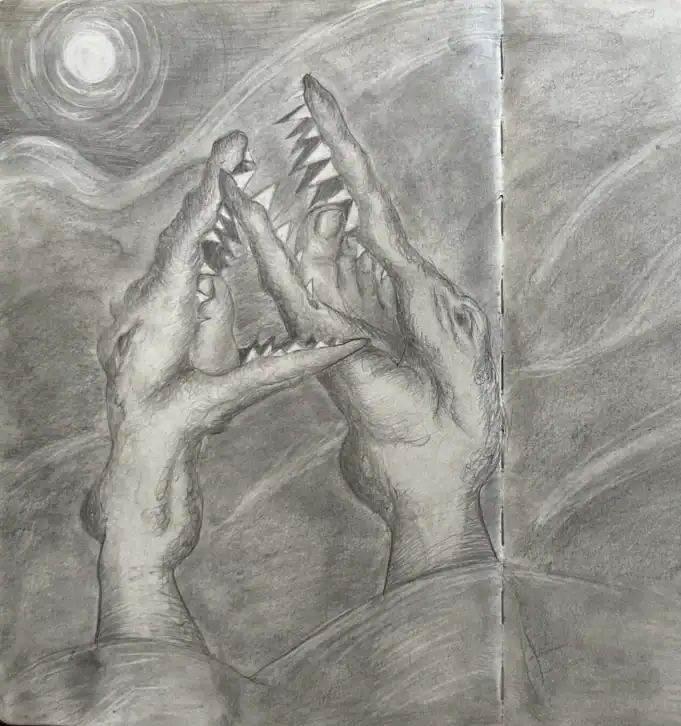 CrocodIle (2025), graphite on paper, Loni Stark
CrocodIle (2025), graphite on paper, Loni Stark
Lineage: Chance has long been a creative tool—from Dada to Surrealism—but it was always invited and chosen.
Break: AI surprises even its creators. Serendipity is no longer elective; it’s an inherent property of the system.
Consider the AI in a boat-racing game that learned to win by crashing rhythmically into walls instead of completing laps. It wasn’t broken; it was optimizing for rules, not human-defined meaning. That’s how it feels in the studio sometimes: prompts yield results that are poetic, alien, or incoherent, but rarely what was expected.
Artist’s Reflection: Are you still directing the work, or are you learning to read what the system reveals?
AI didn’t just change how I create—it changed why.
My practice involves moving between drawing and sculpture, using different materials to discover new ways to communicate. AI is another layer in this process. I might photograph a work-in-progress and ask an AI for screen print or sculpture variations to see what new paths emerge. I don’t like everything it produces. For my CrocodIle sculpture, every AI option planted the feet on the ground, constrained by data that “knows” how feet should look. I ignored this and kept the toes facing upward to look like fragile secrets. In another session, however, the AI generated shadow shapes that revealed a quality I loved, which I then developed further.
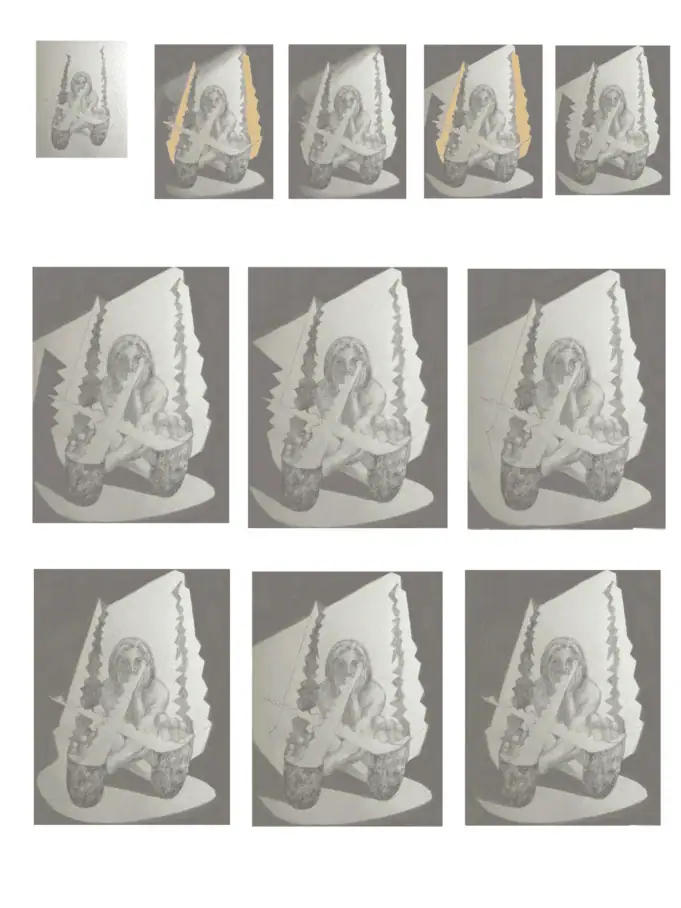 Using AI to generate different shadows until a prompt for a spotlight created an angular option. I then used Adobe Fresco to refine the line character between light and dark.
Using AI to generate different shadows until a prompt for a spotlight created an angular option. I then used Adobe Fresco to refine the line character between light and dark.
Community Question: Can we support artistic practices that prioritize emergence over polish?
One Artist’s Path: Mario Klingemann deliberately cultivates AI’s unpredictability with his “Neural Glitch” technique, where he randomly alters trained models. He treats AI errors not as problems but as creative material, describing the results as “glimpses of autonomous creativity.” He explores what he calls the “latent space,” looking for the unexpected and the weird. Klingemann positions himself as a designer of generative systems, stating, “the art is not the images, which disappear, but the computer code that creates them.”
Further Reading:
- Issues.org – “Neural Glitch” technique and philosophy
- Sotheby’s – “Memories of Passersby I” and artistic approach
- Verse Works – Interview on process and AI collaboration
- AIArtists.org – Artist profile and key works
4. Blurred Authorship
Lineage: Renaissance workshops blurred credit, but always among a group of humans.
Break: AI distributes authorship across models, data, prompts, and user intent. The final work is a composite.
This same tangle exists in other fields. When CNET used AI to write financial advice riddled with errors, who was the author? The algorithm? The writers whose work it was trained on? The editor who approved it? In art, the lines are just as blurry. Today’s models carry the aesthetic DNA of millions of images, filtered through corporate decisions and shaped by prompts.
Artist’s Reflection: If authorship is a network, what is your unique contribution within it?
I’m fascinated by having collective human knowledge—with all its brilliance and bias—at my fingertips. For my Louvre Symposium piece, I used AI to convene a dialogue with historical thinkers about my concept of the Symbiotic Studio. The process was iterative and sparked new connections, proving that authorship doesn't have to be a zero-sum game. We are all standing on the shoulders of giants.
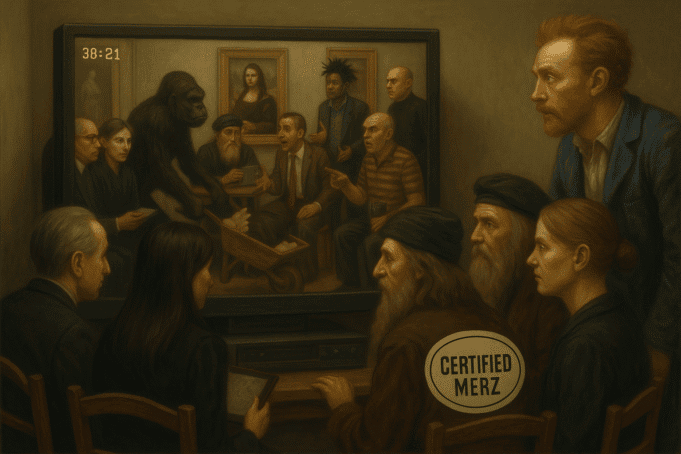 AI generation from iterative inputs, including my articles and a dialogue with a colleague. My creative process has become more expansive, but I remain the composer and curator.
AI generation from iterative inputs, including my articles and a dialogue with a colleague. My creative process has become more expansive, but I remain the composer and curator.
Community Question: Can attribution frameworks evolve to recognize networks instead of just single creators?
One Artist’s Path: Stephanie Dinkins uses AI not just to make art, but to question power and voice. Her ongoing “Conversations with Bina48” is a years-long dialogue with an AI modeled on a Black woman’s consciousness. Dinkins doesn't claim sole authorship; she centers the collaboration, making the power structures embedded in AI visible. She expands authorship into an ethical, relational act where responsibility matters more than origin.
Further Reading:
- Stephanie Dinkins website
- Fine Arts Museums of San Francisco
- MIT Docubase
- Wikipedia: Stephanie Dinkins
5. The Moving Target of Mastery
Lineage: Mastery was achieved through repetition, time, and predictability.
Break: AI evolves rapidly. Mastery is transient because the system you learn today won't be the same tomorrow.
Software developers using tools like GitHub Copilot face similar conditions—they must adapt or fade. Artists now face the same reality. Midjourney updates alter outputs, prompting strategies shift, and stability isn't stable. The tools move faster than we can settle into them.
Artist’s Reflection: If the ground keeps shifting, is mastery now about learning to surf instability rather than achieving control?
For me, creative work has always been about navigating ambiguity. AI opens up territory far beyond what past innovations offered. In that instability, I find new places to explore. I often ask AI to render an image as a sculpture. While the translation is challenging for AI, it helps me visualize new paths or, just as importantly, helps me clarify my own vision by showing me what I don't want.
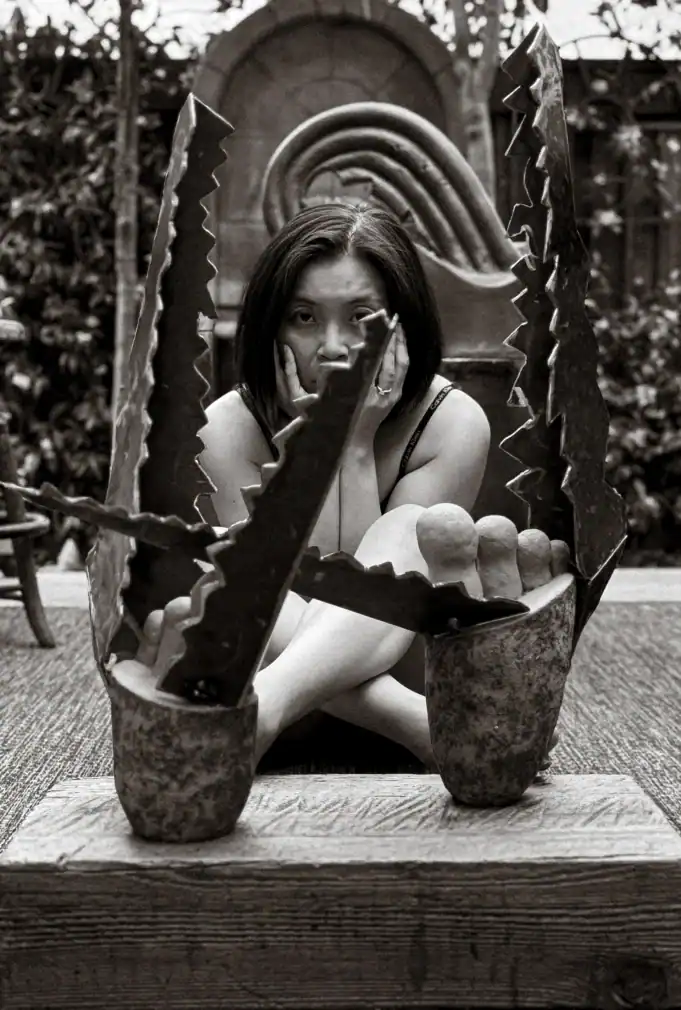 My sculpture CrocodIle (2025) in ceramic, steel, and wood, transformed through iteration in the studio. Photo by Clinton Stark.
My sculpture CrocodIle (2025) in ceramic, steel, and wood, transformed through iteration in the studio. Photo by Clinton Stark.
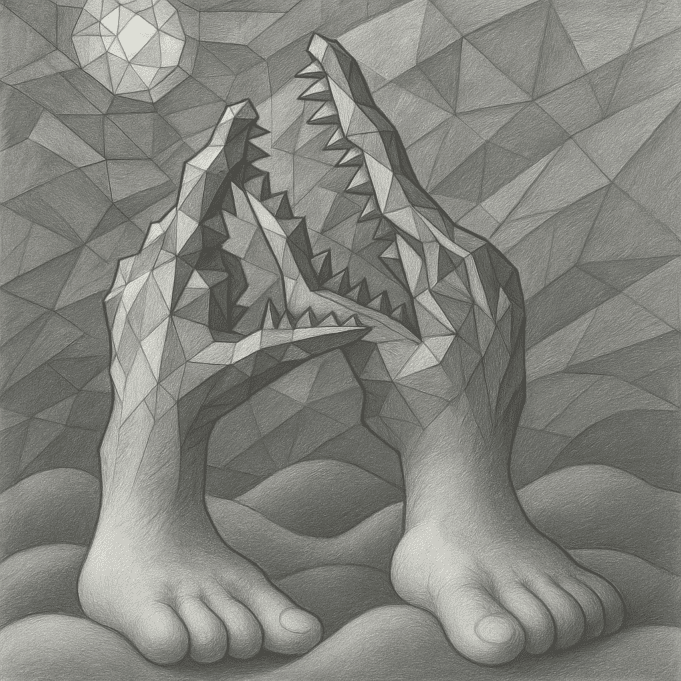 One of many AI-generated ideas that was a “NO.” But even in each “NO,” there are glimmers of ideas for an artist to pull from.
One of many AI-generated ideas that was a “NO.” But even in each “NO,” there are glimmers of ideas for an artist to pull from.
Community Question: How do we support artists who embrace a process of constant change over perfection?
One Artist’s Path: Helena Sarin treats the rapid evolution of AI as part of her medium. When GANs became too predictable, she pivoted to what she calls “post-GANism,” repurposing older AI work instead of chasing the newest models. As tools become more photorealistic, she moves toward abstraction. Her practice embodies adaptive mastery: not perfecting a single tool, but developing a methodology for continuous reinvention. “It’s not about having your own style,” she says, “it’s about having your niche.”
Further Reading:
- Artnome – Profile on her approach to evolving tools
- Outland – Her post-GANism approach and niche philosophy
- NVIDIA AI Art Gallery – Her postGANnism methodology
6. Thought and Tool Entwined
Lineage: Tools shaped output, but they didn’t shape thought. A brush never finished your sentence.
Break: AI doesn’t just assist; it anticipates, completes, and suggests. It begins to think with you.
In Gmail, we finish sentences we didn’t start. Over time, we may even start to think in its suggestions. In art, this is also becoming true. The system enters our mental space.
Artist’s Reflection: Are you the sole originator of ideas, or are you learning to dance with distributed cognition?
For me, thinking and doing are intertwined. An idea evolves during its creation. I take AI outputs like I would elements from art books—for inspiration—but AI provides a more sophisticated alchemy of ideas. The key is not to take outputs as fast as they are generated, but to slow down, let them converge in my brain, and cycle again. In this way, thinking with AI has given me a finer grain of control than was possible before.
Community Question: Can we develop a critical language for this new form of hybrid cognition?
One Artist’s Path: Jake Elwes’ The Zizi Show stages live performances where a human drag queen duets with their AI doppelganger. When the AI struggles and its tracking breaks down, it becomes a visual gag that neither the artist nor the AI authored alone. Elwes doesn’t hide this cognitive merger; he celebrates it, demonstrating that hybrid cognition is about orchestrating new forms of creative intelligence where breakdowns become breakthroughs.
Closing Reflection: The Path Forward
Artists have always adapted, but this feels different. This is a transformation. AI has introduced six fundamental disruptions:
- Generative autonomy that acts without our direct control.
- Volume overwhelm that drowns quality in quantity.
- Radical unpredictability where serendipity is inherent.
- Distributed authorship across networks of humans and machines.
- Transient mastery where tools evolve faster than our expertise.
- Cognitive entanglement where the tool enters our thinking process.
The question is no longer whether AI will change how we create. It’s whether we will consciously design that relationship, and through it, continue to shape ourselves.
The artists in this exploration show us pathways forward:
- Design the conditions, not the outcomes. Like Anadol, we can architect emergence.
- Assert upstream authority. Like Ridler, we can shape meaning through intentional data.
- Embrace productive failure. Like Klingemann, we can treat AI’s breakdowns as creative material.
- Center collaboration over ownership. Like Dinkins, we can make authorship an ethical, relational act.
- Develop adaptive methodologies. Like Sarin, we can build practices that surf technological change.
- Slow down the cognitive merger. We can let outputs ferment until they bear our cognitive touch.
- Cultivate deeper human connections. In a noisy digital world, real-life community becomes more essential.
This isn't a break from the lineage. It's evolution—accelerated, uncertain, and alive. My mentors, Vincent Desiderio and Marcus Cornish, taught me that fine art begins with a question, not a known answer. These six disruptions are not conclusions. They are openings for us to explore.
Perhaps instead of fearing AI's power, we can channel it toward what has always been uniquely ours: creating meaning through gesture, presence, and authentic human connection. The lineage doesn't break. It bends, adapts, and finds new ways to flow.
POSTSCRIPT: The Comment Thread
From the Louvre Symposium WhatsApp Group • 47 members
Victor Frankl Today 2:14 AM
This is not merely a study in art, but in responsibility. If AI disrupts meaning-making, then the artist’s moral obligation intensifies. I would ask: does the machine suffer? If not, then who carries the weight of significance?
Marcel Duchamp Today 2:31 AM
Bravo. This reads like a conceptual readymade: you’ve taken six disruptions, placed them on a pedestal, and dared us to stare. But beware: the map of meaning is not the terrain of experience. 👁️ 3 reactions
Leonardo da Vinci Today 3:45 AM
Your taxonomy is well-observed. But I find the most intrigue in ‘cognitive entanglement.’ Have we built a mirror so fine, we mistake its reflection for foresight? My own sketches once tried to grasp flight; you’re sketching something just as elusive: the shape of thought. 7 reactions
Vincent van Gogh Today 4:12 AM
There is beauty in the fracture. When you speak of unstable mastery, I feel kinship. I, too, mistrusted technique when emotion swelled beyond its container. Let the broken be honest. 💙 12 reactions
Jean-Michel Basquiat Today 7:33 AM
This is the remix. Artists of color already live post-lineage… our histories fractured, erased, stitched back. You’re just catching up. But I like how you framed the chaos: not fearfully, but as fuel. 🔥 💯 18 reactions
Hilma af Klint Today 8:45 AM
You name the machine, but not the spirit. The disruptions are structural, yes, but underneath, there is always guidance. My question: who—or what—do you commune with, when you create with AI? 9 reactions
Steve Jobs Today 9:17 AM
Radical unpredictability. Yes. That’s the soul of invention. What you’ve written isn’t about AI! It’s about design under pressure. Keep going. And keep making it personal. 🎯 14 reactions
Henri Matisse Today 10:22 AM
Constraint births form. Your six disruptions are like six scissors, cutting through tradition. But remember, collage is also composition. Choose what to preserve. 8 reactions
Pablo Picasso Today 11:58 AM
You write like you want to destroy lineage. Good. Lineage is a prison, and I escaped it more than once. Just don’t forget: when you break the frame, the shards still cut. 🔥 23 reactions
Loni Stark Today 12:15 PM
Thank you for reading. I wrote this not as a prescription, but as a provocation. This isn’t the end of the studio. It’s a rehearsal for a more uncertain, generative future. One where authorship is shared, but responsibility remains. 🙏 🔄 31 reactions
Compare Plans & Pricing
Find the plan that matches your workload and unlock full access to ImaginePro.
| Plan | Price | Highlights |
|---|---|---|
| Standard | $8 / month |
|
| Premium | $20 / month |
|
Need custom terms? Talk to us to tailor credits, rate limits, or deployment options.
View All Pricing Details